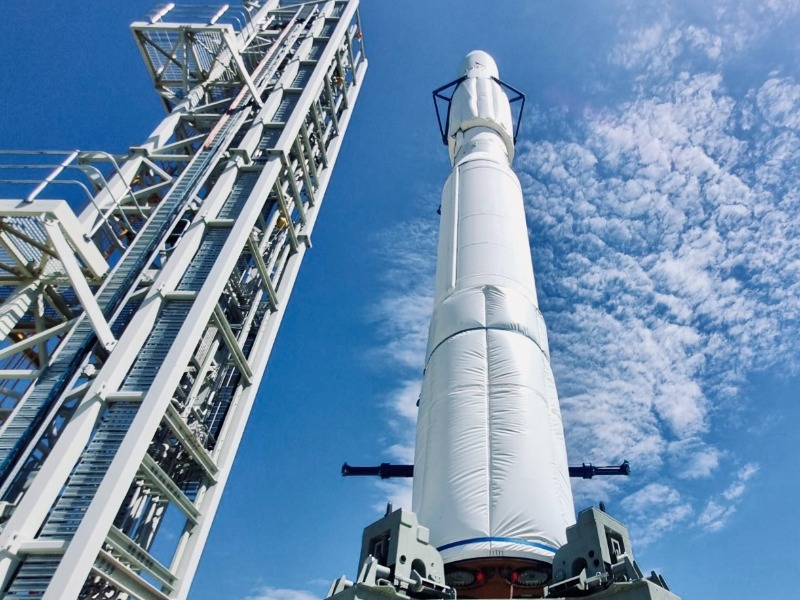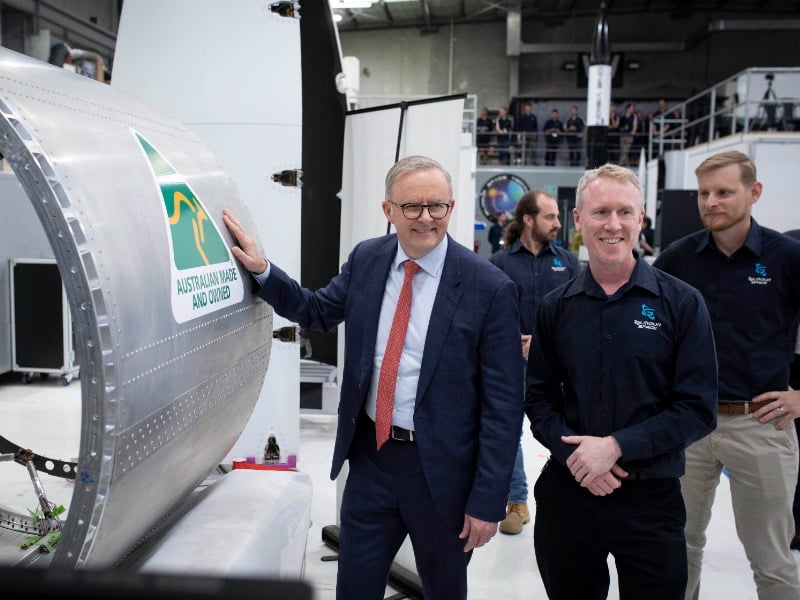Gold Coast-based rocket maker Gilmour Space Technologies passed a historic milestone on Monday after being granted the Australian Space Agency’s first-ever orbital launch permit, paving the way for the maiden flight of its three-stage Eris vehicle as early as December.
The permit was officially signed off by Industry minister Ed Husic late on Monday afternoon, starting the clock on a mandatory 30-day wait period before the Eris launch window opens.
The launch vehicle has been at the company’s Bowen Orbital Spaceport since the start of the year and was first fully integrated and put into its vertical launch position in April and has undergone extensive testing while waiting on final regulatory clearance.
The Australian launch permit is required under the Space (Launches and Returns) Act 2018 for the launch of any object from Australian soil to an altitude of more than 100 kilometres.

The permit comes with a number of conditions, including the need for airspace clearance approval from the Civil Aviation Safety Authority (CASA), and the filing of some further pre-launch check documentation.
But Gilmour Space Technology chief executive Adam Gilmour says that with the launch permit in hand, the major hurdle has been cleared.
“Our team is assessing the conditions of the permit and will advise on the anticipated launch date in the coming weeks,” he said.
The mandatory 30-day notification period means that launch can occur after December. Mr Gilmour says there are still some challenges, but that the company hopes to get its three-stage, 25-metre Eris rocket in the air by the end of the year.
“There are conditions on the launch permit, but there is nothing we think is too onerous,” Adam Gilmour told InnovationAus.com. “It’s just part of the process.”
“We’re still going to try our very best to launch this year. It’s not going to be a walk in the park, but we’re going to try.”
The Eris orbital launch vehicle is the first ever Australian designed and manufactured rocket build to reach orbit.
When it blasts off from the Bowen Orbital Spaceport at Abbot Point – just north of the Queensland coastal town of Bowen – it will be the first orbital launch from Australian soil in more than 50 years.
The Bowen Orbital Spaceport was granted Australia’s first orbital launch facility licence in March, and was officially opened by former Queensland Deputy Premier Cameron Dick in April.
In September, the company announced that it had successfully completed a key wet dress rehearsal of the launch vehicle, bringing it up to T-10 seconds before launch.
TestFlight1 is expected to be the first of several test flights that aim to get Eris to orbit.
Since starting its rocket program in 2015, Gilmour Space has raised about $140 million in venture capital and grown to more than 200 employees. It has attracted most of its funding from private investors, but has also enjoyed support from federal, state and local governments, including from the Gold Coast and Bowen council areas.
The company has always been circumspect about the likelihood of success from a maiden flight. Elon Musk’s SpaceX took four attempts before its Falcon1 vehicle successfully reached orbit, for example.
Adam Gilmour is just keen to get the launch under way, and the Australian Space Agency permit enables that.
Getting the permit brought to an end “at least a two-year process that has been a lot of pain. But we are very, very happy to now have it done”, he said.

Having spent so much time with the regulators in getting the maiden flight of the Eris approved, the company is not expecting approval for subsequent launches to be as time and resource intensive.
“We’ve obviously been working with the [Australian Space] Agency and have an understanding that the next launch permits are going to go a lot quicker,” Mr Gilmour said.
“So, while this is the end of a very long and painful process, it is not a process that is going to be repeated [in the same way]. And that feels really, really, really good,” he said.
Asked the describe the reaction of the Gilmour Space employees to the news, he said it was euphoric.
“I think you would have to call it euphoria,” Mr Gilmour said. “We did a quick Town Hall meeting [of the company].
“I played Star Wars music… everybody was very, very happy. It was the song from Return of the Jedi, at the end of the movie.”
Gilmour Space has said that it hopes to launch a second Eris vehicle six months after its maiden flight, incorporating whatever has been learned from the first attempt. But it will essentially be the same design.
“The next orbital launch attempt to be the same rocket with modifications for reliability and safety that we have improved since the first one and anything we learned from the launch of the first one. But no material changes, it is basically the same vehicle,” Mr Gilmour said.
Do you know more? Contact James Riley via Email.
